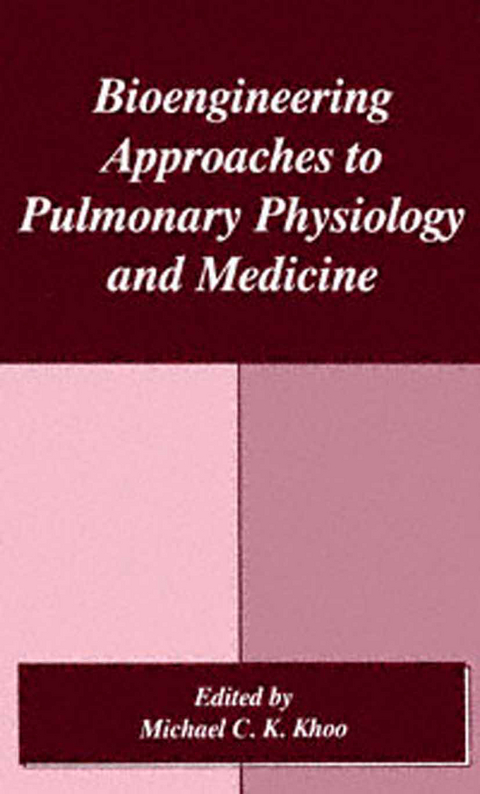
Bioengineering Approaches to Pulmonary Physiology and Medicine
Kluwer Academic/Plenum Publishers (Verlag)
978-0-306-45370-0 (ISBN)
Systems Modeling of Ventilatory Control.- Understanding the Dynamics of State-Respiratory Interaction During Sleep.- The North Carolina Respiratory Model.- The Application of ARX Modelling to Ventilatory Control.- Estimation of Changes in Chemoreflex Gain and ‘Wakefulness Drive’ During Abrupt Sleep-Wake Transitions.- Modeling of the Neural Control of Breathing.- Realistic Computational Models of Respiratory Neurons and Networks.- Synaptic Plasticity and Respiratory Control.- Dysrhythmias of The Respiratory Oscillator.- Nonlinear Dynamical Analysis of Respiration.- Assessing Deterministic Structures in Physiological Systems Using Recurrence Plot Strategies.- Measures of Respiratory Pattern Variability.- Fractal Noise in Breathing.- Nonlinear Control of Breathing Activity in Early Development.- Modeling of Pulmonary Mechanics and Gas Exchange.- Possible Fractal and/or Chaotic Breathing Patterns in Resting Humans.- Heterogeneity of Pulmonary Perfusion Characterized by Fractals and Spatial Correlations.- The Temporal Dynamics of Acute Induced Bronchoconstriction.- Understanding Pulmonary Mechanics Using The Forced Oscillations Technique.
| Erscheint lt. Verlag | 31.7.1996 |
|---|---|
| Zusatzinfo | VIII, 256 p. |
| Verlagsort | New York |
| Sprache | englisch |
| Maße | 178 x 254 mm |
| Themenwelt | Medizin / Pharmazie ► Physiotherapie / Ergotherapie ► Orthopädie |
| Studium ► 1. Studienabschnitt (Vorklinik) ► Physiologie | |
| Naturwissenschaften ► Biologie ► Zoologie | |
| Technik | |
| ISBN-10 | 0-306-45370-3 / 0306453703 |
| ISBN-13 | 978-0-306-45370-0 / 9780306453700 |
| Zustand | Neuware |
| Informationen gemäß Produktsicherheitsverordnung (GPSR) | |
| Haben Sie eine Frage zum Produkt? |
aus dem Bereich


